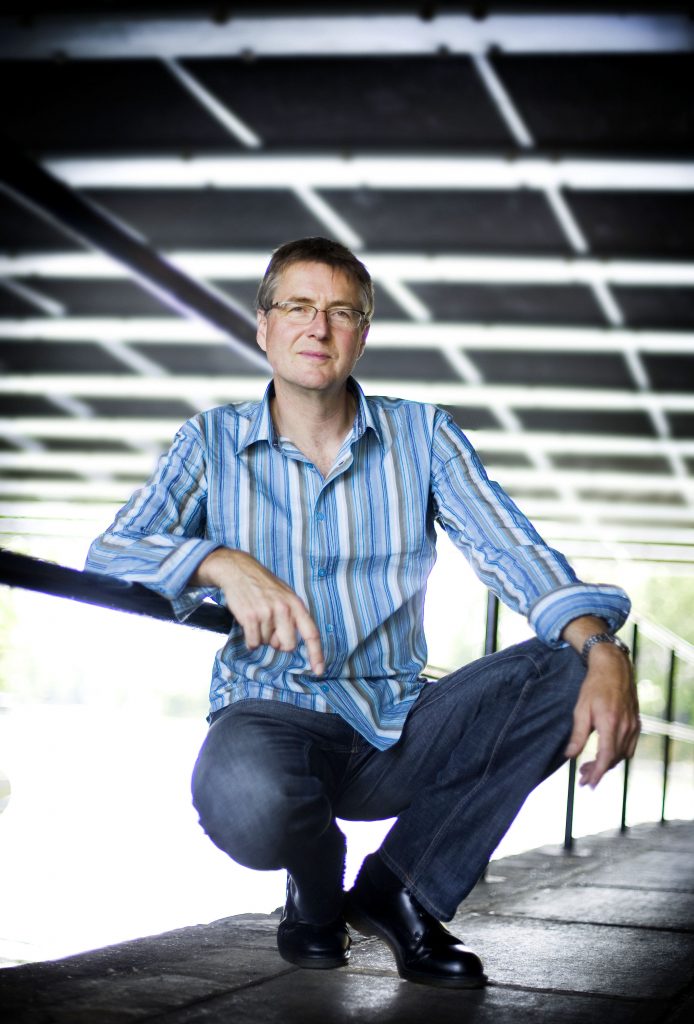Early music gets regal treatment from New World Symphony, guest conductor Goodwin

When British period instrument specialist Paul Goodwin debuted with the New World Symphony in 2015, he turned the gifted musicians of the orchestral academy into a real Baroque band. On Sunday afternoon Goodwin returned to the New World Center in Miami Beach to lead “Royal Fireworks,” a varied program of English, French and German scores from the seventeenth and eighteenth centuries. Utilizing spare vibrato, bright timbres and transparent textures, he again made the ensemble sound like an authentic early music group.
Charm is not how one would ordinarily describe the sober works of Henry Purcell (1659-1695) but Goodwin managed to draw a plethora of enchanting melody and vibrant sonority from a Purcell suite that provided scoring for his 1691 semi-opera King Arthur. In the opening Chaconne, every instrumental line was clearly audible, and Goodwin — conducting without a podium — set brisk tempos to go with his lively stage presence and engaging remarks.
Dance is an essential component of Baroque music, and there was nothing stodgy about Goodwin’s springy rhythms. Purcell’s rondeau and gavottes were crisp, with incisive articulation from the strong wind compliment of oboists Joo Bin Yi, Emily Beare and James Riggs and bassoonist Justin Cummings. The hornpipe was jaunty and the agility of Gianluca Farina and Aaron Ney turned the trumpet fanfares into celebratory anthems.
The Concerto-Grosso in C minor by Arcangelo Corelli (1653-1713) exemplifies the brilliant Italian string writing that emerged as instrument makers led by Amati and Stradivari devised new fabrication techniques. With violins and violas standing rather than seated, the initial Largo emerged noble and aristocratic. Violinists Sophia Bernitz and Christopher Robinson’s bows seemed to bounce on the strings, their sound lithe and devoid of heaviness. Following a slow interlude that was almost a threnody, two rapid-fire movements pulsated with vibrant life. Bernitz and Robinson provided authentic virtuosity with firm continuo support from Thomas Steigerwald on harpsichord and Amy Sunyoung Lee on cello.
Carl Philipp Emanuel Bach (1714-1788) was perhaps the most gifted of the composer-sons of J.S. Bach. His Sinfonia in G Major opens with a muscular Allegro di molto, and Goodwin engendered a combination of boisterous and refined playing in proper measure. The remarkable Largo presages the slow movement of Beethoven’s Piano Concerto No. 4, with abrupt string exclamations interrupting inspired melodic paths. Goodwin timed the slight hesitations in the final Allegro assai perfectly. The control and precision of Corbin Castro’s and Dominic Brancazio’s incisive horns were matched by high voltage strings.
The music of Jean-Philippe Rameau (1683-1764) represents the more formal style of the French court. He composed thirty operas which are landmarks in the history of music drama. Les Boréades was his final stage work. It remained unperformed until 1972, more than two hundred years after the composer’s death.
The suite from the opera devised by English conductor Paul McCreesh in 2000 is a gem, and in the Gallic sweetness of the Rondeau, the difficult flute lines were splendidly articulated by Johanna Gruskin and Jack Reddick. The beat of tambourine and drum infused a gavotte. That mainstay of French Baroque opera — the wind machine — aided Goodwin’s whipping up of a storm in “Suite des vents.” “Entrée d’Abaris” sports one of the most beautiful melodies of the era, and Goodwin’s expansive treatment made it glow anew. A series of contra dances were given just the right dose of rustic spirit.
With three horns and three trumpets joining winds, strings and percussion, Handel’s Music for the Royal Fireworks was grand indeed. Goodwin astutely merged the sound of an early music ensemble with modern orchestral sonorities. The festive trumpet flourishes of Rebecca Oliverio, Farina and Ney were spot-on, and percussionists Matthew Kibort and Kevin Ritenauer had a field day in the joyous finale. Goodwin and the musicians received a prolonged standing ovation from the matinee audience. Before leaving the stage, the players hugged and congratulated each other — a sight rarely seen in American orchestras.
Michael Tilson Thomas conducts the New World Symphony in Igor Stravinsky’s Variations: Aldous Huxley in Memoriam, Symphony in Three Movements and Petrushka 7:30 p.m. Saturday, January 25 at the New World Center in Miami Beach. nws.edu; 305-673-3331
Posted in Performances
Leave a Comment
Mon Jan 20, 2020
at 3:01 pm
No Comments





